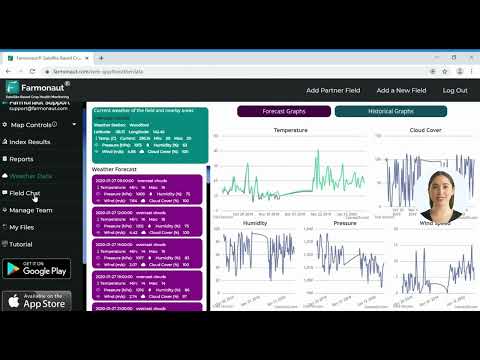Revolutionizing Defense: The Surge in Military Drone Technology and Market Growth

“The global military drone market is projected to reach $26.8 billion by 2025, growing at a CAGR of 12.4%.”
In recent years, we’ve witnessed a remarkable surge in the military drone market, driven by rapid advancements in unmanned aerial systems (UAS) and an increasing demand for sophisticated counter-terrorism solutions. As we delve into this fascinating realm of defense technology, we’ll explore the latest trends, innovations, and market projections that are reshaping the landscape of modern warfare and defense strategies.
The Evolution of Military Drone Technology
The evolution of military drone technology has been nothing short of revolutionary. From basic reconnaissance platforms to highly advanced, multi-role systems, drones have become an integral part of modern military operations. Let’s examine some of the key developments that are propelling this rapid growth:
- Enhanced Intelligence, Surveillance, and Reconnaissance (ISR) Capabilities: Modern military drones are equipped with state-of-the-art sensors and cameras, allowing for unprecedented levels of real-time intelligence gathering.
- Increased Operational Efficiency: Drones can operate in environments too dangerous or inaccessible for human personnel, reducing risks and improving mission success rates.
- Cost-Effectiveness: Compared to traditional manned aircraft, drones offer significant cost savings in terms of procurement, operation, and maintenance.
- Versatility: From small, handheld units to large, long-endurance platforms, military drones come in various sizes and configurations to suit different mission requirements.
As we continue to innovate in this field, we’re seeing the emergence of groundbreaking technologies that are set to redefine the capabilities of military drones.
Innovative Advancements in Military Drone Technology
Several cutting-edge technologies are at the forefront of military drone innovation. Let’s explore some of the most significant advancements:
1. Drone Swarm Technology
One of the most exciting developments in military drone technology is the concept of drone swarms. This innovative approach involves deploying large numbers of small, coordinated drones that can work together to accomplish complex missions.
“Military drone swarms can consist of up to 1,000 individual drones working together autonomously for complex missions.”
Key benefits of drone swarm technology include:
- Enhanced surveillance capabilities
- Improved search and rescue operations
- Overwhelming adversary defenses
- Cost-effectiveness compared to larger, individual drones
The potential applications of drone swarms in military operations are vast, ranging from reconnaissance missions to coordinated strikes on multiple targets simultaneously.
2. Hybrid Propulsion Systems
Another significant trend in military drone technology is the development of hybrid propulsion systems. These innovative systems combine multiple types of propulsion to enhance the operational capabilities of unmanned aerial vehicles (UAVs).
Benefits of hybrid propulsion systems include:
- Extended flight times
- Increased payload capacity
- Improved fuel efficiency
- Enhanced versatility in various mission profiles
By leveraging hybrid propulsion technology, military drones can adapt to a wider range of operational requirements, making them more versatile and effective in diverse combat scenarios.
3. Autonomous Driving Applications in Military Logistics
While often associated with aerial drones, autonomous technology is also making significant inroads in ground-based military applications. Autonomous driving systems are being developed for military logistics, offering several advantages:
- Reduced risk to human personnel in dangerous environments
- Improved efficiency in supply chain operations
- Enhanced precision in navigation and delivery
- 24/7 operational capability without fatigue
Companies like Kratos Defense & Security Solutions have demonstrated advancements in this area, showcasing self-driving truck platooning systems that address driver shortages and improve safety in challenging environments.
4. Tactical Communication Systems Integration
The integration of advanced tactical communication systems is another crucial development in military drone technology. These systems enable seamless coordination between drones, ground forces, and command centers, enhancing overall situational awareness and operational effectiveness.
Key features of tactical communication systems in military drones include:
- Encrypted, real-time data transmission
- Integration with existing military communication networks
- Enhanced interoperability between different platforms
- Improved command and control capabilities
For instance, Collins Aerospace, a part of RTX Corporation, recently secured a significant contract to further develop the U.S. Navy’s Cooperative Engagement Capability, which integrates multiple platforms for enhanced tactical communication.
Military-Grade Drone Certification: Ensuring Compliance and Performance
As military drone technology continues to advance, the importance of rigorous certification processes cannot be overstated. Military-grade drone certification ensures that unmanned aerial systems meet the stringent requirements for defense applications, covering aspects such as:
- Security features
- Reliability and durability
- Interoperability with existing military systems
- Compliance with defense standards and regulations
One notable example is the Blue UAS certification, which is crucial for drones intended for use in U.S. Defense operations. Companies like ZenaTech, Inc. are actively pursuing this certification for their advanced drone systems, such as the IQ Nano drone sensor.
The significance of military-grade certification extends beyond mere compliance. It serves as a guarantee of quality and performance, ensuring that drones can operate effectively in the most demanding and critical situations encountered in military operations.
Market Growth and Projections
The military drone market is experiencing unprecedented growth, driven by increasing global security concerns and the continuous evolution of drone technology. Let’s examine some key market trends and projections:
- Market Size: The global military drone market is expected to reach $21.93 billion by 2029, growing at a compound annual growth rate (CAGR) of 6.5%.
- Regional Growth: North America currently dominates the market, but significant growth is anticipated in Asia-Pacific and Middle Eastern regions.
- Key Players: Major companies like Lockheed Martin, Northrop Grumman, and Boeing are at the forefront of military drone innovation and market growth.
- Emerging Segments: Hybrid drones and small tactical drones are expected to see rapid adoption and market expansion.
These projections underscore the growing importance of drones in modern military strategies and the significant investment being made in this technology sector.
| Technology | Description | Key Benefits | Potential Applications |
|---|---|---|---|
| Drone Swarm Capabilities | Multiple small drones working in coordinated groups |
• Enhanced surveillance • Overwhelm defenses • Cost-effective |
• Reconnaissance • Search and rescue • Coordinated strikes |
| Hybrid Propulsion Systems | Combination of different propulsion types in a single drone |
• Extended flight time • Increased payload capacity • Improved fuel efficiency |
• Long-endurance missions • Heavy payload delivery • Versatile operations |
| Autonomous Driving for Logistics | Self-driving vehicles for military supply operations |
• Reduced personnel risk • Improved efficiency • 24/7 operational capability |
• Supply chain management • Battlefield resupply • Evacuation operations |
| Tactical Communication Systems | Advanced networks for drone-to-ground coordination |
• Real-time data transmission • Enhanced interoperability • Improved command and control |
• Battlefield coordination • ISR operations • Joint force operations |
Impact on Global Security and Counter-Terrorism Efforts
The surge in military drone technology is having a profound impact on global security and counter-terrorism strategies. Here are some key ways in which drones are transforming these critical areas:
- Enhanced Intelligence Gathering: Advanced drones provide unprecedented access to real-time intelligence, enabling more informed decision-making in counter-terrorism operations.
- Precision Strike Capabilities: Drones equipped with precision-guided munitions allow for targeted strikes with minimal collateral damage, a crucial factor in counter-terrorism missions.
- Reduced Risk to Personnel: By conducting surveillance and strike missions remotely, drones significantly reduce the risk to human operators in high-threat environments.
- Improved Border Security: Long-endurance drones are increasingly used for border patrol and surveillance, enhancing national security efforts.
- Rapid Response Capabilities: Drones can be quickly deployed in emergency situations, providing critical intelligence and support in time-sensitive scenarios.
As military drone technology continues to evolve, we can expect to see even more innovative applications in the realm of global security and counter-terrorism.
Challenges and Ethical Considerations
While the advancements in military drone technology offer numerous benefits, they also bring forth significant challenges and ethical considerations that need to be addressed:
- Privacy Concerns: The use of advanced surveillance drones raises questions about privacy rights and the extent of military intelligence gathering.
- Autonomous Weapon Systems: The development of fully autonomous drones capable of making targeting decisions without human intervention is a subject of intense ethical debate.
- International Law and Regulations: The use of military drones in cross-border operations presents complex legal challenges in the context of international law.
- Proliferation and Security Risks: As drone technology becomes more accessible, there are concerns about its potential misuse by non-state actors or hostile entities.
- Psychological Impact: The use of drones in warfare can have significant psychological effects on both operators and affected populations.
Addressing these challenges requires ongoing dialogue between military strategists, policymakers, ethicists, and international organizations to establish robust frameworks for the responsible development and use of military drone technology.
Future Trends and Innovations
Looking ahead, we can anticipate several exciting trends and innovations in the field of military drone technology:
- AI and Machine Learning Integration: Future drones will likely incorporate more advanced AI systems, enhancing their autonomous decision-making capabilities and adaptability in complex environments.
- Quantum Sensors: The development of quantum sensors could dramatically improve the sensing capabilities of military drones, enabling them to detect stealth aircraft or underwater submarines.
- Energy Harvesting Technologies: Innovations in energy harvesting could lead to drones capable of extended missions by replenishing their power from environmental sources.
- Hypersonic Drone Systems: Research into hypersonic technology could result in ultra-fast drones capable of rapid global deployment.
- Nano-Drone Swarms: Advancements in miniaturization may lead to the development of even smaller, more agile nano-drone swarms for covert operations.
These future trends promise to further revolutionize military capabilities and reshape the landscape of modern warfare.

Conclusion: The Future of Defense Technology
As we’ve explored throughout this comprehensive overview, the military drone market is experiencing a remarkable surge, driven by technological advancements and evolving global security needs. From innovative drone swarm capabilities to the integration of AI and quantum technologies, the future of defense technology is being shaped by these unmanned aerial systems.
The projected market growth to $21.93 billion by 2029 underscores the critical role that military drones will continue to play in defense strategies worldwide. As we move forward, it will be essential to balance the technological advancements with ethical considerations and international regulations to ensure responsible development and deployment of these powerful systems.
The revolution in military drone technology is not just changing the way wars are fought; it’s transforming the entire landscape of global security, intelligence gathering, and counter-terrorism efforts. As we stand on the brink of this new era in defense technology, one thing is clear: the future of military operations will be increasingly shaped by the capabilities and innovations in unmanned aerial systems.
FAQ Section
Q1: What are the main advantages of using drones in military operations?
A1: The key advantages include enhanced intelligence gathering, reduced risk to personnel, improved operational efficiency, cost-effectiveness compared to manned aircraft, and the ability to access dangerous or hard-to-reach areas.
Q2: How does drone swarm technology work?
A2: Drone swarm technology involves deploying multiple small drones that work together autonomously. They use advanced algorithms to coordinate their movements and actions, allowing them to perform complex tasks like surveillance or coordinated attacks more effectively than individual larger drones.
Q3: What is military-grade drone certification?
A3: Military-grade drone certification is a process that ensures drones meet the stringent requirements for defense applications. It covers aspects such as security features, reliability, durability, and compatibility with existing military systems. Certifications like Blue UAS are crucial for drones to be used in U.S. Defense operations.
Q4: How are autonomous driving applications being used in military logistics?
A4: Autonomous driving technology is being applied to military logistics through self-driving truck systems. These systems can improve supply chain efficiency, reduce risks to personnel in dangerous environments, and operate continuously without fatigue, enhancing overall logistical capabilities.
Q5: What are some of the ethical concerns surrounding military drone use?
A5: Ethical concerns include privacy issues related to surveillance, the potential for autonomous weapons systems to make life-or-death decisions without human intervention, compliance with international laws in cross-border operations, and the psychological impact of drone warfare on both operators and affected populations.
Earn With Farmonaut: Affiliate Program
Earn 20% recurring commission with Farmonaut’s affiliate program by sharing your promo code and helping farmers save 10%. Onboard 10 Elite farmers monthly to earn a minimum of $148,000 annually—start now and grow your income!
Additional Resources:







